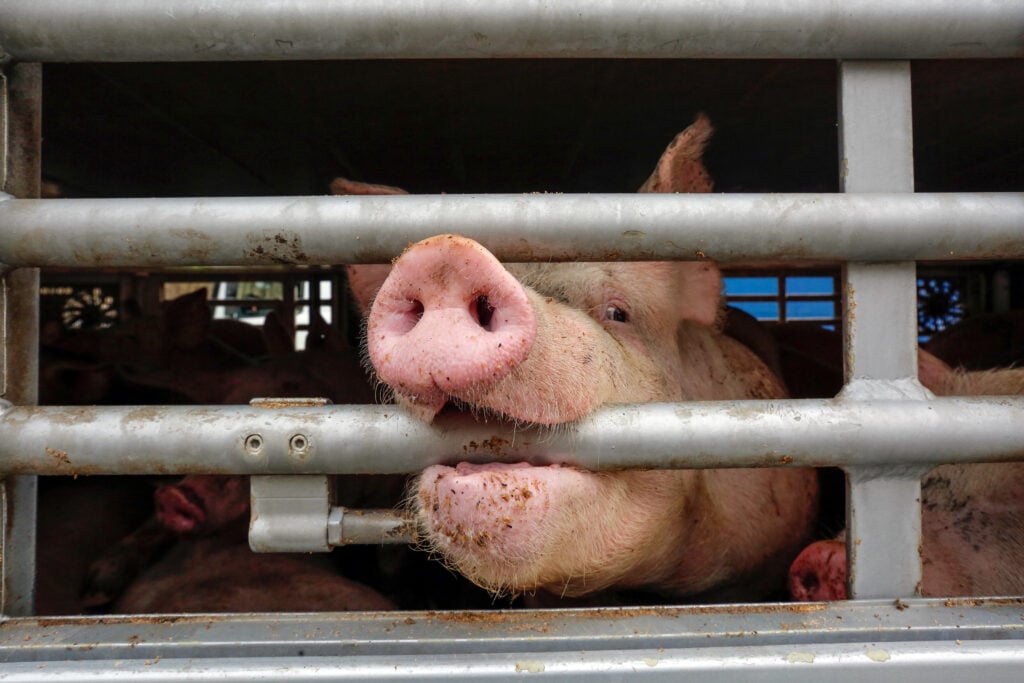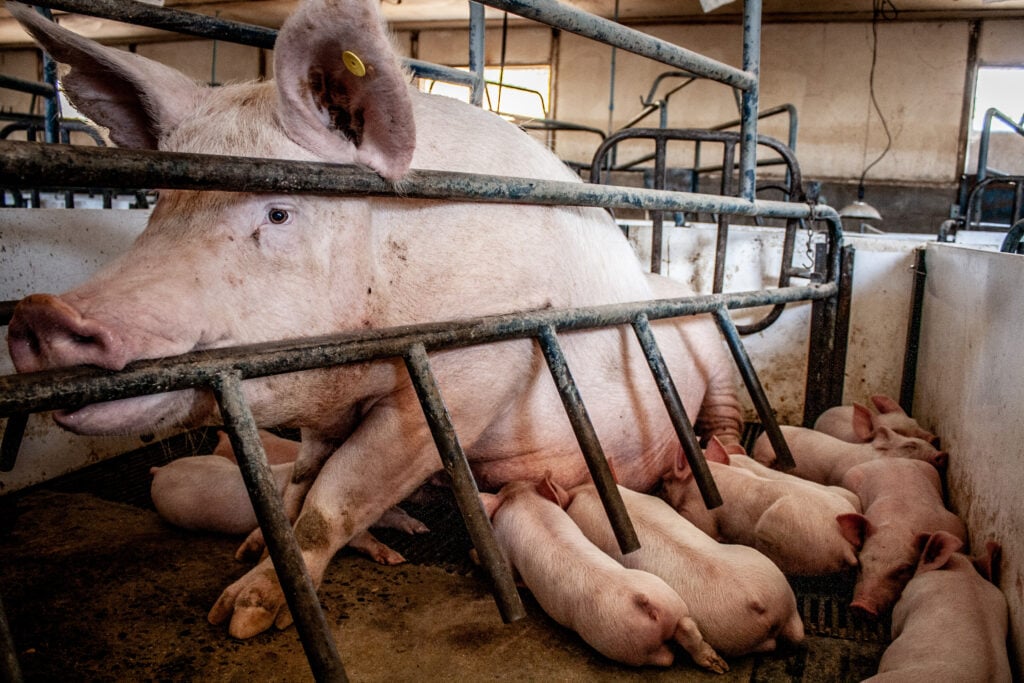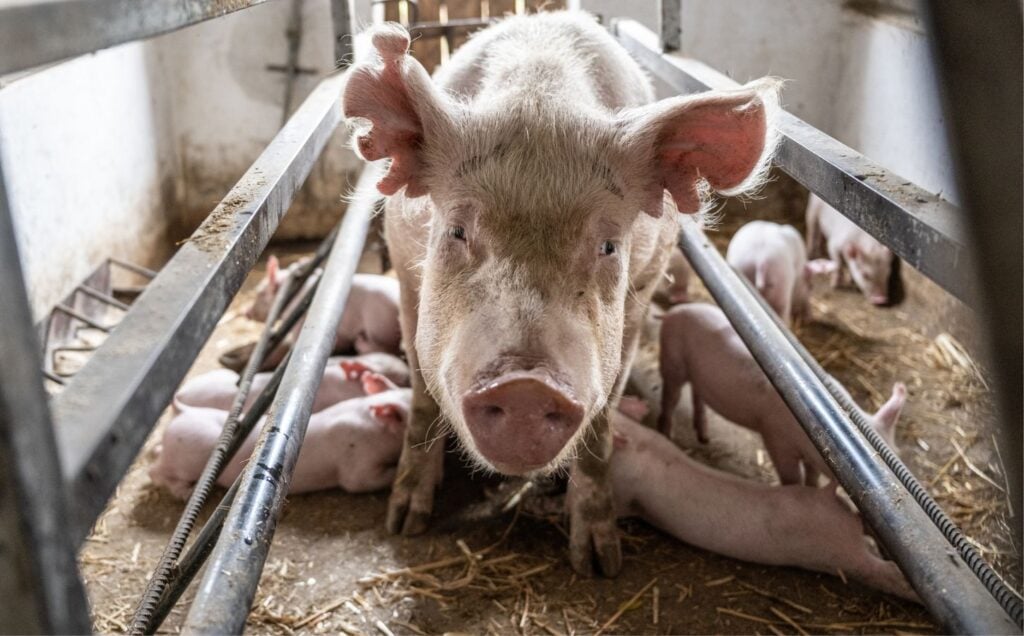Despite the fact that pigs tend to be adored by humans, many people overlook the fact that more than a billion are farmed and killed for ham, pork, and bacon each year. These animals are often raised in what many deem to be cruel farming conditions and systems.
Children who grew up watching shows like Peppa Pig may be shocked to learn that they are fed the flesh of an animal they’ve come to love. This was the inspiration behind a new campaign, Peppa is Bacon, which calls for kids in the UK to be told the truth about our food system. This includes being shown slaughterhouse footage in schools.
“It is crucial that, at an appropriate age, children are taught about the sources of their meals, the journey from farm to table, and the ethical considerations of animal welfare,” said Plant Based News co-founder Robbie Lockie, who started the campaign. “This knowledge will not only foster a deeper understanding of the world around them, but also empower them to make informed decisions about their own consumption choices.”
Here’s everything you need to know about pigs, their personalities, and the way they are treated by humans.

How intelligent are pigs?
Cleverness should have no bearing on how we treat any species, but it’s still worth noting that pigs have been classified as perhaps the most intelligent animal we regularly farm for food. They are thought to be the fifth-most intelligent animal in the world, smarter than dogs, and possess a greater mental capacity than a three-year-old human child.
Experts have found pigs can recognize their own names, are highly inquisitive, and possess considerable problem-solving abilities. They can also learn from experience, and have been observed working collaboratively to free themselves from pens.
A study carried out at Pennsylvania State University saw pigs learn to play simple video games at a similar level of ability to primates. They did so by learning to control a joystick with their snouts and moving a cursor around a screen. Pigs also have good object-location memories, and are able to remember to look in the same spot they have previously found grub.
Many scientists who have studied pigs have marveled at their capabilities. Animal welfare scientist Tina Widowski is quoted as saying: “When I was working with the monkeys, I used to look at them and say: ‘If you were a pig, you would have this figured out by now.’”
The social lives of pigs
Pigs are also known to have intricate social lives. When left to their own devices in the wild, they form complex groups and build nests. They have even been observed appearing to “decorate” their homes with flowers.
They are known to be playful and protective animals, who relax in the sun and form close bonds with one another. Pigs have also appeared to show empathy for other pigs in distress.
Mother pigs generally stay close to her piglets until they’ve matured. They often sleep nestled together as a family.
Pigs are able to communicate with each other, reportedly using at least 20 types of oinks, grunts, and squeals. They use these sounds differently depending on circumstance, such as calling for food or attracting a mate.
What happens to pigs on farms?
Despite their intelligence and capabilities, pigs are kept in squalid and painful conditions on farms all over the world.
In the UK, around two thirds are raised on factory farms. Breeding sows are forcibly impregnated twice a year via artificial insemination, and placed into “farrowing crates” around a week before they give birth.

Farrowing crates are metal cages that female pigs are kept in for around five weeks while nursing their piglets. They don’t offer any room for the mother to turn around, and her babies feed from a small area next to the crate known as “the creep.” The sow cannot access, or in any way take care of, her young.
Piglets in the food system are subjected to mutilations like tail docking and teeth clipping. These are carried out to prevent them from injuring each other due to stress. The practices are routinely done without anaesthetic.
After being weaned from their mothers when they’re about four weeks old, piglets are taken to “fattening pens.” Six months later, they will either be sent for slaughter or used as a breeding sow.

Pigs and gestation crates
It’s a similar story in the US. One of the main differences, however, is that gestation crates (also known as sow stalls) are still legal in this country.
Gestation crates are used to house pregnant pigs for up to four months at a time. Many breeding sows in the US – and other countries including Australia – therefore spend the vast majority of their lives in these crates.
Sow stalls are banned in some states, including Arizona, California, Colorado, and Ohio. The cages are also prohibited in the UK, New Zealand, Sweden, and Switzerland. Their use is currently limited in the EU.
How are pigs killed for meat?
At the slaughterhouse, many pigs are stunned with a high concentration of carbon dioxide (CO2) gas before being killed.
This is a popular method in the US, Australia, and UK. While the meat industry often claims it is a “humane” process, many experts maintain that pigs suffer tremendously throughout.
Around three animals at a time will be put on a metal gondola and lowered down into a machine containing a high concentration of CO2, usually between 70 and 90 percent.
This forms a carbonic acid on any wet surface it touches, including pigs’ eyes, throats, and lungs. It has been said that this means they “burn from the inside out.” Investigations have found that pigs squeal and thrash in apparent pain and distress before losing consciousness after around 60 seconds.
Another method of killing farmed pigs is to use electrical stunning and to cut their throats. Due to the fact that pigs have thick skulls, however, it is often difficult to stun them effectively. This means that pigs are often alive and kicking when their throats are cut. Similarly, some are conscious when plunged into tanks of scalding water.
UK residents can sign the petition for mandatory lessons on slaughterhouses here.






